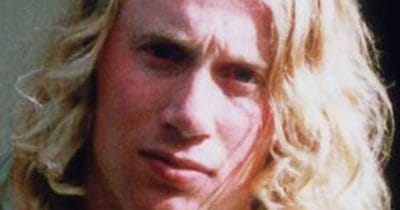
In the 1935 film The Little Colonel, Shirley Temple tap-danced down a staircase with Bill “Bojangles” Robinson, and into the hearts of millions.
The child star was barely able to walk when she made her screen debut as a toddler but it didn’t take long for her iconic curls, precocious attitude, and delightful dimples to win over audiences across the globe.
Of course, that was also a lot of pressure for someone so young to carry around.
But did you know that from the first time she appeared on the screen in 1932, she was mistreated and abused both psychologically and sexually?
Many people believe that Shirley Temple was surrounded by pedophiles and have gone so far to say her early movie roles from the 1930s were little more than fodder for perverts.
Hollywood then tried to hide the flagrant abuses, but many have been well-documented.
Shirley Temple wrote an autobiography Child Star where she described several instances of sexual harassment at the hands of Hollywood studio heads.
From Age Three, Temple Endured Horrific Work Conditions
When Shirley Temple appeared in 1932’s War Babies — her first speaking role — she was only three years old. The film was one of the Baby Burlesks, a series of eight shorts that satirized major motion pictures.
The film is set in Buttermilk Pete’s Cafe where the child performers dance, play music, and drink milk. Shirley is an exotic dancer and does stuff like trade kisses for lollipops and says things like “I’m expensive.”
She also responds when a soldier in a diaper calls her “baby,” and she definitely is one. Shirley also has her first onscreen kiss with Eugene Butler.

In her autobiography, Shirley Temple Black describes the series as ”a cynical exploitation of our childish innocence” and notes the short films were sometimes racist or sexist.
The young star also forced to work the day after she underwent an operation to lance her eardrum, and on another occasion was made to dance on a badly injured foot.
Filmmaker Charlie has been strongly questioned afterwards.
If the children didn’t behave according to Charles Lamont’s wishes, he kept a soundproof black box, dubbed the “punishment box”. It was six feet on each side, containing a block of ice.
An offending child was locked within this dark, cramped interior and either stood uncomfortably in the cold, humid air, or had to sit on the ice. Those who told their parents about this torture were threatened with further punishment.
Temple was sent to the box several times, but she says, “far as I can tell, the black box did no lasting damage to my psyche. Its lesson of life, however, was profound and unforgettable. Time is money. Wasted time means wasted money means trouble.”
MGM Producer Exposed Himself To Temple When She Was 12
Shirley Temple achieved international stardom with the release of Bright Eyes in 1934.
When she was 12 years old, Shirley signed with Metro-Goldwyn-Mayer.

Shirley Temple describes in her autobiography that on her first visit to MGM, she met one of the studio’s producers, Arthur Freed. During the interview he unzipped his trousers and exposed himself to her.
In her memoir Child Star, actress Shirley Temple claimed that an MGM producer known to have an ‘adventuresome casting couch’ unzipped his trousers and exposed himself to her during their first meeting in 1940.
”Being innocent of male anatomy, she responded by giggling, and he threw her out of his office”, said the actress’s obituary.
Producer Tried To Assault Her When Temple Was 17
Anita Colby was artistic director for producer David O. Selznick of Gone with the Wind fame. She warned Temple to be careful if she “found him (Selznick) in stockings.”
Temple writes in her autobiography Child Star that this gave her “the impression that casual sex could be a condition of employment” with Selznick.

She also tells a hair-raising story of David O. Selznick literally chasing her around his office, expecting his “due” as her boss.
”Coming around my side of the desk, he reached and took my hand in his. Glancing down, I saw the telltale stocking feet. Pulling free, I turned for the door, but even more quickly he reached back over the edge of his desk and flicked a switch I had learned from Colby was a remote door-locking device. I was trapped. Like the cartoon of wolf and piglet, once again we circled and reversed directions around his furniture. Blessed with the agility of a young dancer and confronted by an amorous but overweight producer, I had little difficulty avoiding passionate clumsiness”.
Temple Constantly Fought Off Sexual Predators
Temple launched her prolific acting career when she was a child, but the star’s age didn’t stop men from making sexual advances toward her.
The little girl was regularly groped, threatened, and terrorized by men.
After she refused a Hollywood producer for his advances, he responded “Look, I’m going to be a big executive. We’re going to have to get along…What I had in mind was just a workplace formality.” She replied to this with, “It may be in your contract, but not mine.” The man, who Temple refers to as “Wizard” said, “Sex is like a glass of water. You get thirsty, you drink. You want sex, you have it.”
Shirley Temple’s Fortune Squandered
The singing, dancing, acting cutie-patootie retired from the limelight at the ripe old age of twenty-two and when she did she discovered that she only had forty-four thousand dollars left in her bank account!
At her peak, Temple commanded $10,000 a week. One can imagine her surprise when, as an adult, she discovered that despite having earned $3.2 million, she had only $44,000 in her bank accounts.

Her dad had mismanaged her finances so badly that she was basically left with nothing.
But in her autobiography, Temple forgave her father for robbing her blind “For reasons some may find inexplicable, I felt neither disappointment nor anger.”
Temple Sued Graham Greene For Continually Writing Nasty Things About Her
Not everyone was a Shirley Temple fan. The novelist Graham Greene, who was also a film critic, was sued by 20th Century Fox for his review of “Wee Willie Winkie” in the magazine Night and Day, which he edited.
The review hadn’t been published in the U.S., but the studio and Temple’s representatives sued Greene and Night and Day in British court for libel. They won; courts ordered Greene to apologize and pay 3,500 pounds. (Modern readers theorize Greene’s review was meant as satire.)
Greene fled to Mexico and he wasn’t happy about having to go on the lam for a movie review.
In a 1938 letter to a friend (reprinted in Graham Greene: A Life in Letters), Greene wrote, “I found a cable waiting for me in Mexico City asking me to agree to apologise to that little bitch Shirley Temple—so I suppose the case has now been settled with the maximum publicity.”

One Woman Claimed That Temple Stole Her Daughter’s Soul
Stardom threatened Shirley Temple in many ways. In 1939, a woman who thought Temple had stolen her daughter’s soul tried to assassinate her during a radio performance of “Silent Night.”
The woman believed that shooting Temple would release her daughter’s soul from captivity, but thankfully, she was unsuccessful.
Temple Was Plagued By Nasty, Untrue Rumors
Shirley Temple’s sunny innocence was a welcome antidote to dark days of scarce employment and bread lines during the Depression years of 1935 to 193.
But her hold on the troubled nation’s imagination also sparked outlandish but persistent rumors.
Some claimed her hair was fake. Others believed the tiny preteen was actually a 30-year-old midget who herself had a 10-year-old daughter! The rumor was so prevalent, especially in Europe, that the Vatican dispatched Father Silvio Massante to investigate whether she was indeed a child.
Another rumor said her teeth had been filed to make them appear like baby teeth. Unsurprisingly, Temple regularly lost teeth, but — as she points out in Child Star — she wore dental plates and caps to hide the gaps in her teeth when she was on-camera.
Her First Love Was An Abusive Alcoholic
In 1943, 15-year-old Temple met John Agar, an Army Air Corps sergeant who became an actor.
Shirley Temple married him at age 17 on September 19, 1945 before 500 guests in an Episcopal ceremony at Wilshire Methodist Church in Los Angeles.
According to Temple’s autobiography, after vows were exchanged, things went from bad to worse.
The handsome actor was a violent alcoholic who regularly abused his teenage wife, continually cheated on her, and was frequently arrested for drunk driving. John Agar was determined to bad mouth her as the FBI launched a detailed background check when she was nominated for office by Richard Nixon, according to Daily Mail.
In 1949, Temple sued for divorce on the grounds of mental cruelty.
The Truth About Shirley Temple’s “Wizard of Oz” Connection
As a child, Temple was an avid reader, and especially enjoyed The Wizard of Oz series written by L. Frank Baum.
In Child Star, she says she was so absorbed in the stories of Oz, that when her mother suggested she could play Dorothy, she replied that she really just wanted to meet Dorothy.
But after four consecutive years as the queen of the box-office, Temple’s career finally faltered in 1939. She lost the lead in The Wizard Of Oz to Judy Garland after Fox refused to loan her to MGM.

When Shirley’s studio refused to let her out of her contract to star in the MGM vehicle, Judy secured the role, despite being older than Dorothy was originally written to be.
But maybe Temple was spared yet another assault when she didn’t got the role. According to Garland, MGM’s studio head Louis Mayer routinely fondled her left breast, telling her that she “sang from the heart.” When Garland finally confronted him about this behaviour, Mayer seemed shocked. He told her that he felt he was like a father to her.
How Shirley Temple Helped Her Daughter Get Sober
Shirley Temple’s daughter Lori got hooked on heroin while playing in a punk band.
In 1993, when Lori was 39 years old, she was caught in possession of drugs at the airport in Portland, Oregon.

She pleaded guilty and was sentenced to two years probation, 120 hours of community service and to pay a fine of $385. She was also required to attend drug therapy sessions and submit to random drug screenings.
When her daughter most needed her, Temple was there to help her. It was thanks to her that Lori got a second chance at life. She was placed in a rehab center, where she was treated by experts in the matter.

Temple even had the whole family go through therapy together so Lori wouldn’t have to do it alone.
Although Lori claims to have had a difficult relationship with her mother growing up, she credits Temple for helping her kick the habit.
Temple Was Thrown In With the Wolves, But Emerged A Lioness
Shirley Temple was an child star who charmed President Roosevelt and his wife, shared chewing gum with Amelia Earhart, and sat on J. Edgar Hoover’s lap.
To accomplish this, she constantly had to fight off lecherous Hollywood moguls who forced themselves on her.
But at 22, her screen appeal had diminished almost completely, and her divorce from Agar no doubt contributed to her new “adult” image.

For whatever reason, she retired from the film business in 1950. That same year, she married Charles Alden Black after a 12-day courtship, and their marriage lasted almost 55 years, until Black’s death in 2005.
During that time, she sat on the boards of corporations and organizations, including The Walt Disney Company and the National Wildlife Federation.
She served as the United States Ambassador to Czechoslovakia (August 23, 1989 – July 12, 1992), having been appointed by President George H. W. Bush. She was the first and only female US ambassador to Czechoslovakia.
Her honors and awards are extensive, and they serve as testament to her ability to overcome the many obstacles and challenges that might have devastated someone with less drive.

Despite living a life filled with turmoil, Temple wrote in her memoir, Child Star: An Autobiography, that she emerged from this series of traumatic events unscarred.





